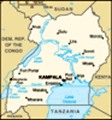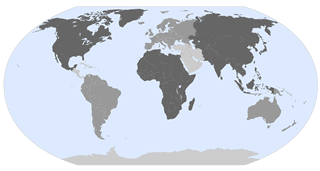Advertisement
Published: September 3rd 2012
Hi everyone. We are back on line!!!! Internet access in Africa has been either not available or very, very slow. The last (and only 2
nd) bog entry I sent you all about 50 days ago, took nearly 2 hours to up load.We are now in Swakupmond in Namibia and we are only 18 days away from coming home.
Thank you to our beautiful daughter Kerrie for at least keeping my family informed that we are still alive!! I will try to send at least this blog today as we are off early again tomorrow.
Love to you all
Nairobi - Lake Nakuru, 18 July 2012
After leaving Nairobi at 8.30am after a briefing from Wilson our Kenyan guide, we loaded up our bags into the new 4x4 bus. It has a couple of tables in it as well as power. We have a group of 16 of mixed ages. Two people have completed the trip we are just about to commence after this 14-day gorilla trek. They are from Ireland, England, NZ, Copenhagen, San Diego, Switzerland and we are the only ones from Aust.
We drove for a couple of hours and stopped for lunch at
a beautiful tree-covered picnic area. We had to have several guys on guard as there were baboons there who won’t give up re trying to get food. They can be pretty dangerous if you let them get the upper hand. We had salad and meat sandwiches and fruit. It hit the spot. We then took a 3 hour game drive around Lake Nakuru National Park, seeing impala, zebras, buffalo, warthogs, Rothschild giraffes (which have white legs), waterbuck, Thompson gazelles and a massive amount of bird life (pelicans, doves, seagulls, cormorants, spoon-billed herons and lots more. The main fish in the Lake is tilapia.
The lake's abundance of algae attracts the vast quantity of flamingos that famously line the shore. As there has been a lot of rain, the number of flamingos is minuscule in comparison to the normal numbers. Nakuru means "Dust or Dusty Place" in the Masaai language, however it is not living up to it’s name when we were there.
Excitingly, we saw our 1
st rhinoceros – a white rhinoceros. We even saw a mother and little baby rhino.
We got to our Kembu Camp site at 5.00pm and we quickly set up our camp
site. There was lots of green grass and there was an area for dining, a log fire and bar with pool table. Toilets and showers were basic but shower was hot!! Our cook Simon is a well oiled machine and several gave him a hand while others got to know each other. We had a lesson on putting up our tent – which took us 10 minutes. The temperature is cool and it started to rain while we were having our spaghetti Bolognese dinner (with red wine). It rained on and off during the night and Tom’s cough kept him awake nearly all night.
ELDORET
The next morning of 19 July, we rose at 6.30am, packed up by 7.30 ready for a hearty egg breakfast and away by 8.15am. The day was dry and cool. We headed for Eldoret a town in western Kenya and the administrative centre of Uasin Gishu District of Rift Valley Province. Lying south of the Cherangani Hills, the local elevation varies from about 2100 metres above sea level at the airport to more than 2700 metres in nearby areas The population is around 200K and it is currently the fastest growing town in
Kenya, and currently the 5th largest in Kenya.
The name "Eldoret" is based on the Maasai word "eldore" meaning "stony river" because the bed of the nearby Sosiani River is very stony.
The town is now home to a large market, Moi University and Eldoret International Airport. It is also known for its cheese factory. Major industries include textiles, wheat, pyrethrum and corn. The town has a number of factories.
Eldoret is the hometown of numerous legendary Kenyan runners, the most renowned of whom is Kipchoge Keino. The high altitude is an ideal training ground for many middle and long distance athletes. The runners from Eldoret have contributed significantly to the economy of Eldoret town from their winnings in races all over the world. Eldoret is also home to the International Association of Athletics Federation High Altitude Training Centre for Kenyan and international athletes.
Eldoret is also surrounded by a very agricultural area, and for this reason is home to many farmers. The surrounding area is covered with corn/maize and vegetable gardens.
We drove through the town across very bumpy road for a further 45 minutes to the Naiberi River Camp. This was a very
well set up camp – visited by Bill Gates in 2009. It had a swimming pool with slippery dip and fountains, a poolside bar and an extensive partly underground bar which had statues of African animals. They had an extensive heating system in the bar with a network of pipes coming from a huge central fire. There was a tunnel-way that lead from the camp site to the bar and pool. Below the outside bar was a fast flowing river. The sun was shining and it was a beautiful 20-odd degree temperature – too cold for me to swim but a couple of the Brits had a swim.
I have enjoyed the local beer, Tusker, with the occasional glass of red. The beer cost around 200 Kenyan Shillings (85c to US$1).
Dinner was battered fish, spinach and mashed potato, finished off with an excellent fruit salad. We piled into bed at 8.30am as we were to be up by 5.00am for a 6.30 departure. Tom slept a lot better because to cough elixir I got him was the right thing. He now just has to catch up on lost sleep.
TO KAMPALA – 20 July
There
was no problem waking up at 5.00am (in the dark). Another hearty breakfast was had and we pulled out of the resort by 6.15am, 15 minutes before our schedule. The road to Kampala was the , typical African roads. Road repairs and building is everywhere. In addition to the rough roads, in towns they put speed humps as well – we were wondering why because you couldn’t go very fast anyway!!
The sun rose at 6.30am and it was a beautiful day. All along the way we saw farmlets, villages and lots of maize, sugar cane and a little bit of wheat.
We reached the Kenyan/Ugandan border at about 9.30am. WE first got our passports stamped on the Kenyan side (very quickly) and crossed the border by driving over a bridge that we were not allowed to photograph. Wilson our guide took all our passports each with US$50 n them and we were all given our Ugandan visa. This all took about 30 mins. Although Uganda are now having democratic elections, the border protection was pretty tight, with blokes in green uniforms with pretty smart guns.
We stopped for lunch putting our chairs
under trees, and had coleslaw, fritz, and tomato sandwiches. There was a gentle breeze blowing which was nice as it was quite hot.
Somewhere along the road we crossed the Equator. We also saw Lake Victoria which is the headwaters for the Nile. There is a Nile River Treaty that does not allow any other country that this very long river flows through, except Egypt, who can take water from this river system. Other countries have other water supplies but Egypt hasn’t.
Kampala is the capital city of Uganda. It is in the South Central part of the country close to the shores of Lake Victoria. The people of Kampala, and Ugandans in general, are very kind and friendly and are very approachable.
Kampala, with a population of approximately 2.5 million, is by far the largest city in Uganda. It is not yet completely overwhelmed with traffic and sprawl like Nairobi. Additionally, Kampala is very safe to walk around, even at night, a welcome fact for many a high-strung visitor arriving from Nairobi.
Uganda, as the recipient of massive amounts of Western aid money, hosts large numbers of Non Governmental Organizations (NGOs). Most of those NGOs
are based in Kampala, so there is an established expat scene in the city.'
There are three methods of public transportation: boda bodas, matatu, and special hires. The fastest method is the boda bodas; motorcycles that you see all over the city. You won't be in Kampala long before being propositioned by a Boda driver.
Owino market is one of the largest in this region of Africa. The endless booths that line the chaotic alleys of Owino offer a mind-boggling array everything from homemade irons, to American hand-me-down-clothes with the Goodwill price tags still on then, to an amazing array of African foods, to any and everything else under the sun. Everything at Owinio starts cheap and gets cheaper with bargaining.
We arrived at our Red Chilli Camp at about 4.30pm. There was a light sprinkle of rain which was short lived. We set up camp and found the facilities clean but average. The shower was lukewarm which was excellent because the day had been quite hot and so the shower was refreshing.
We had beautiful spicy roast chicken, peas and carrots for dinner. Our cook Simon is good value. There was a bar at the
camp site with pool table etc. We tried another local beer which cost 3500 Ugandan shillings (2400 Ugandan shillings to US$1.00). It was 5.3% alcohol strength. As we were going to have a long day of driving the next day, we had to get up at 4.30am (oh no I hear you all say) to away by 6.00am. We did it successfully as we are all now a well oiled machine.
Tom is getting better, having good sleeps and coughing rarely.
Advertisement
Tot: 0.095s; Tpl: 0.015s; cc: 13; qc: 29; dbt: 0.0428s; 1; m:domysql w:travelblog (10.17.0.13); sld: 1;
; mem: 1.2mb

























